At a ceremonial gathering on Saturday, just over eight years after a white supremacist mass shooting left nine dead at the Emanuel African Methodist Episcopal Church in Charleston, South Carolina, ground was broken on a memorial that will transform the land around the church into a space of remembrance and gathering.
Known as Mother Emanuel, the church is among the oldest A.M.E. congregations in the country, and it has served as a site of civil rights organizing for more than two centuries. The 2015 shooting, the deadliest in South Carolina’s history, targeted African American clergy and church members at a bible study in June 2015.
Now, after years of planning, fundraising, and design, construction has begun on the Emanuel Nine Memorial, which aims to honor the nine victims and five survivors while creating welcoming outdoor spaces for the congregation and surrounding community. Designed by Michael Arad of Handel Architects, who is best known for his work on the National September 11 Memorial in lower Manhattan, the project encompasses a courtyard to the west of the church that is centered around a sculpted marble fountain, a contemplative area with a basin of still water behind the courtyard, a garden dedicated to survivors to the east of the church, and a small seating area between an adjacent street and the new garden.
The goal, Arad says, is to respond to “hate and ugliness with love and beauty.”
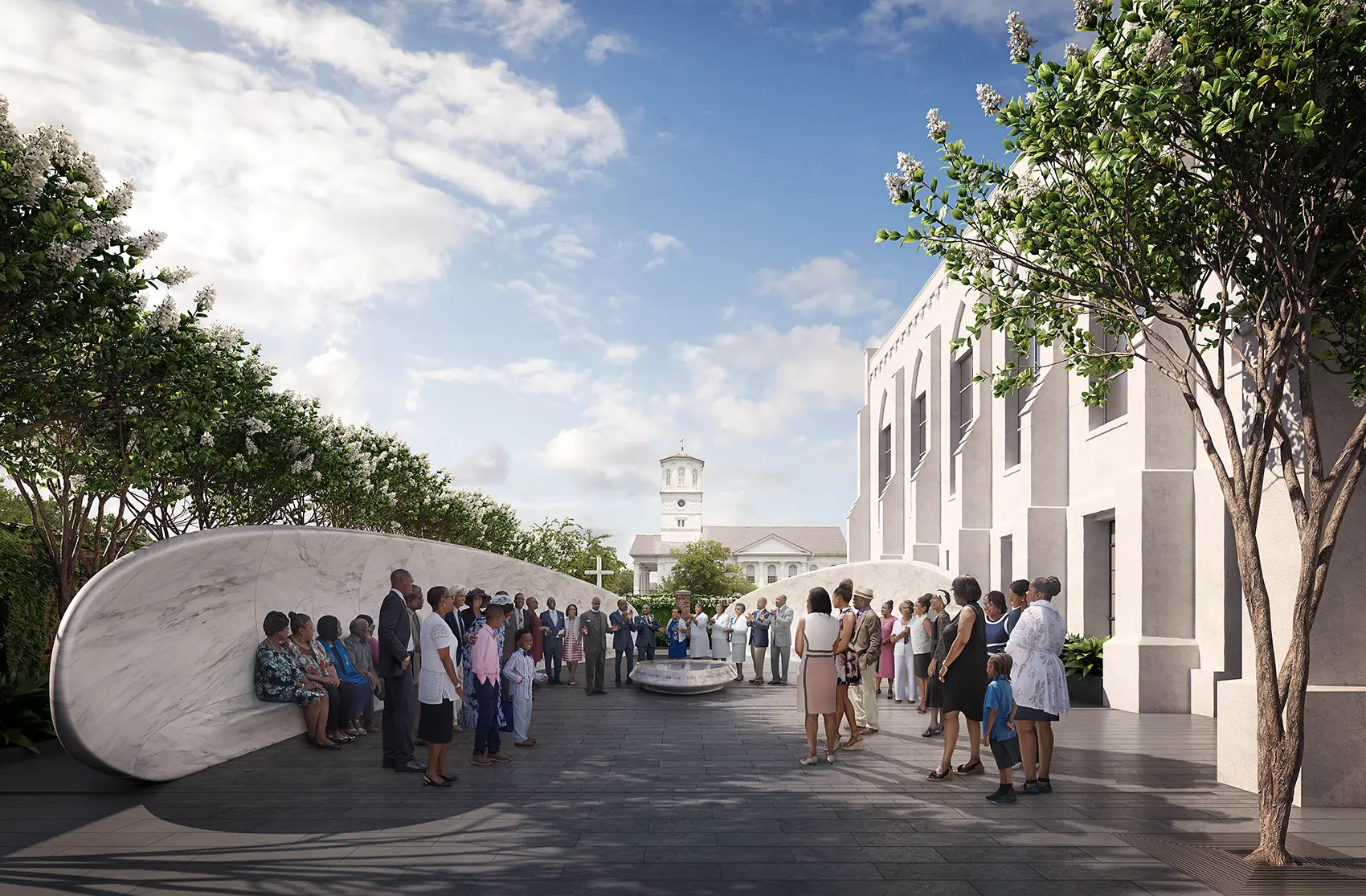
A rendering of the memorial courtyard. Image © DBox
The new set of landscapes, which will replace surface parking and several grassy areas, will help “reimagine the whole grounds almost like a campus,” says Valeria Flores, an associate at Handel who has worked on the project since 2019. A high brick wall, designed with reference to historical Charleston landscapes, will ring the new spaces and buffer them from parking at the rear of the site.
The courtyard will be defined by a pair of curving, white marble benches, one 80 feet long and the other 64 feet long, with high, concave backs that create a sense of enclosure. Between them will sit the fountain, ovoid in form and marked by a cross from which water will emerge; inlaid around its edges in black marble will be the names of the victims.
Among the project’s most significant challenges to date, Flores says, was designing the benches so as to enable the blocks of CNC-milled Vermont marble to be self-supporting and require minimal steel reinforcement. To achieve this, architects at Handel and engineers at Guy Nordenson and Associates collaborated to create an interlocking design in which the blocks buttress each other.
The survivors’ garden will center around a grassy lawn that will also serve as a space for church and community events. Arrayed around the lawn will be five trees and six marble benches, each honoring a survivor of the shooting. (One bench honors the church itself as survivor.)
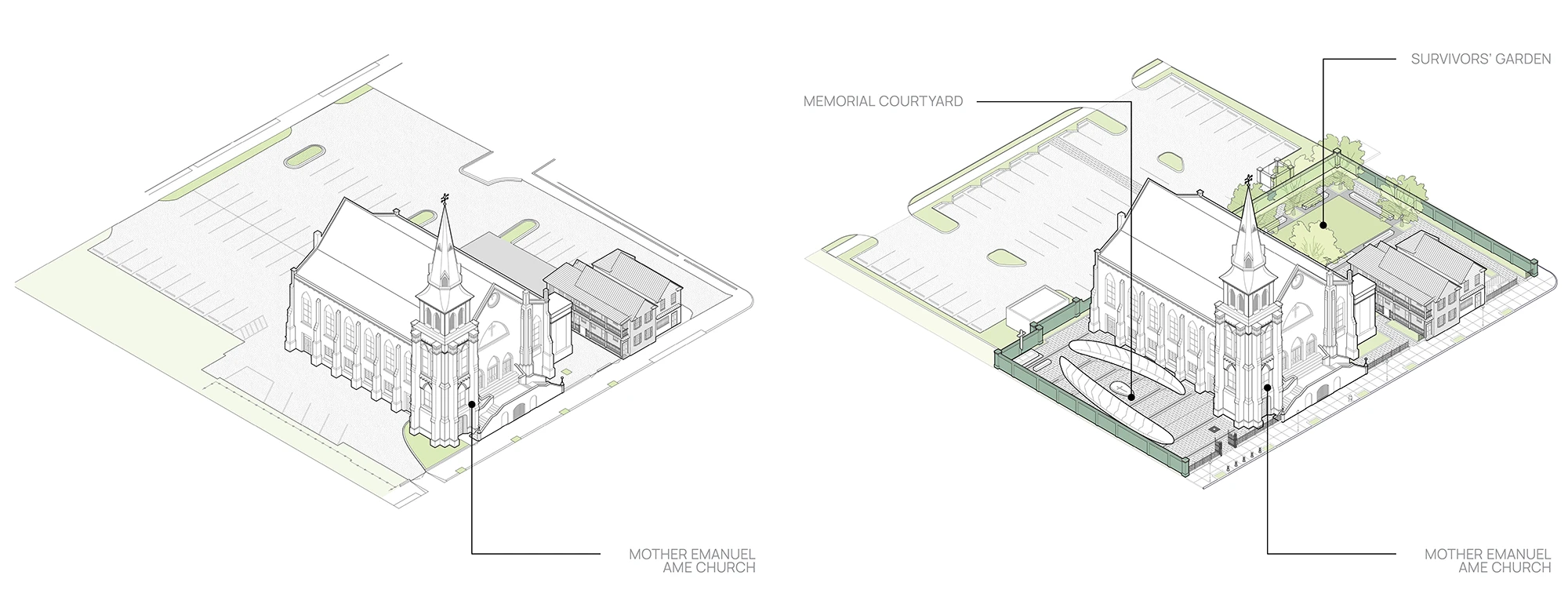
Isometric drawings of the church grounds before (left) and after (right) construction of the memorial. Image © Handel Architects
The construction of the memorial, which is scheduled for completion in 2025, has been enabled by a lengthy fundraising campaign that has now raised over $17 million toward a goal of $25 million, according to Charleston’s Post and Courier. Among its supporters have been Handel and a number of other firms working on the memorial’s design. In Handel’s case, Arad’s time has been donated but the firm has billed for hours worked by other staff. “Everybody’s trying to find a balance and do what they can,” says Arad.
But the shadow cast by white supremacism in Charleston is a long one. The street the church faces is still named for John C. Calhoun, the famed antebellum politician who espoused white supremacy and defended slavery. And the area around the church has in recent years seen its Black population shrink as property values have risen and gentrification has taken hold.
None of this is lost on those working on the memorial. “Everyone involved in the project has been very aware of the history,” says Flores. Indeed, Quarra Stone, the Wisconsin firm that is CNC-milling marble for the memorial, has also taken on projects to dismantle Confederate monuments across the country.
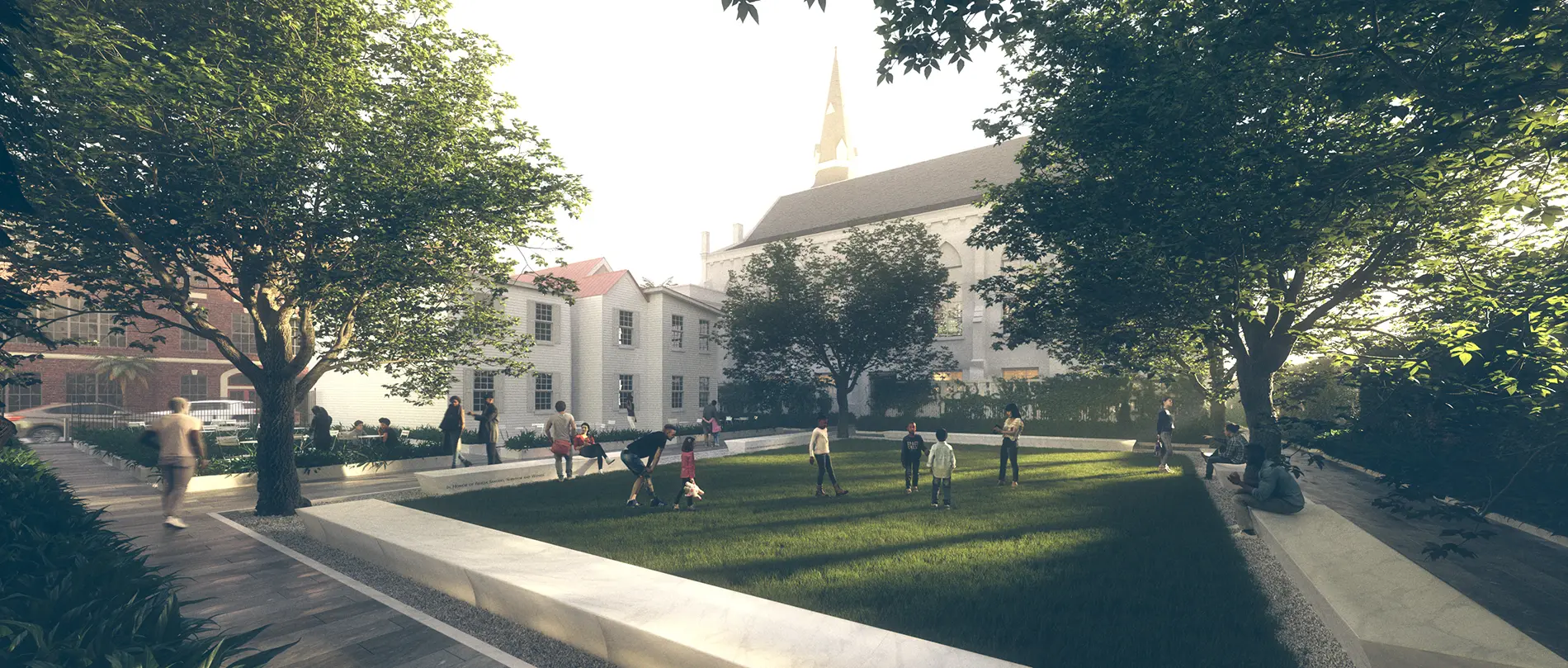
A rendering of the survivors' garden to the west of the church. Image © Handel Architects



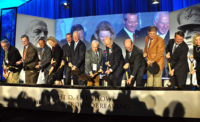

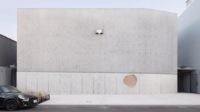
Post a comment to this article
Report Abusive Comment